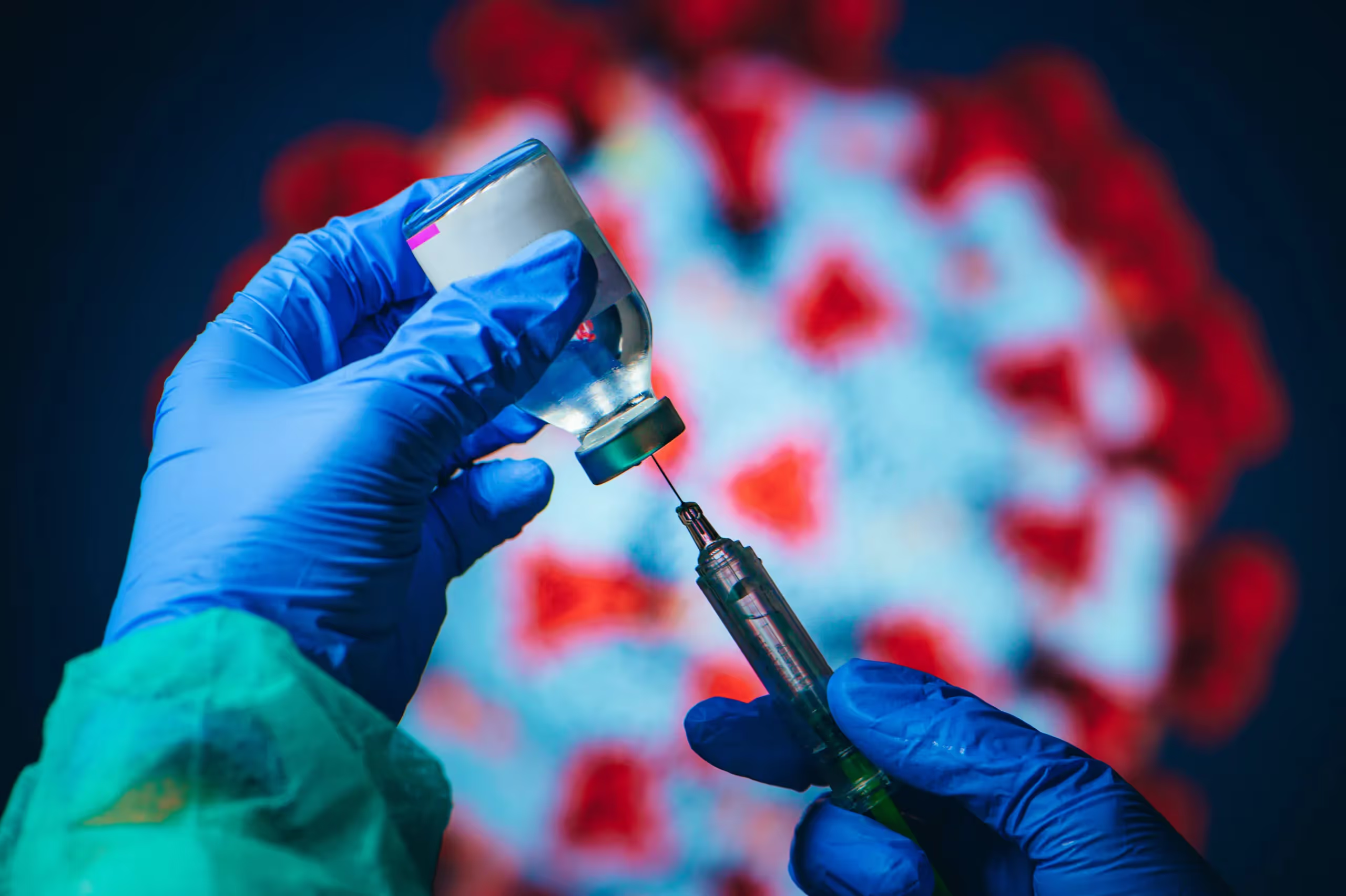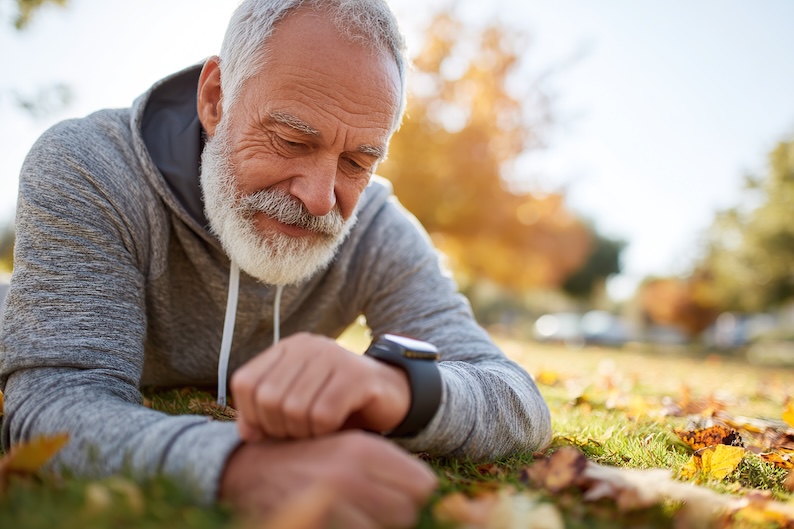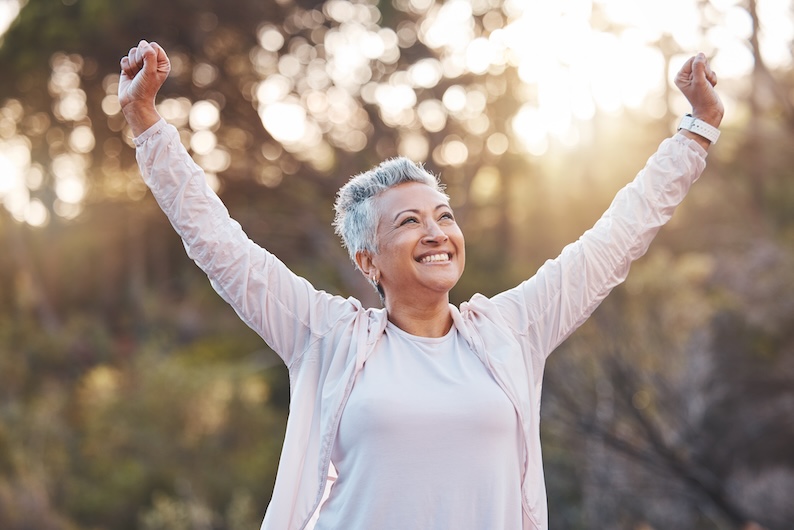2020 was an unprecedented year. Getting through it with your sanity even remotely intact was a chore for most people, and part of that comes from the uncertainty that the COVID-19 came along with. Now that we're getting a better understanding of the disease, the medical world is in a better place to offer some more sound coronavirus precautions for older adults.
While new details are being learned every day, arming yourself with the facts about how the virus spreads, how the vaccines work, and what you can do to prevent the spread will help you stay safe and allow everyone to return to a more normal way of life.
How COVID-19 Spreads
You can't stop the coronavirus if you don't know how it spreads. Let's go through all the details of infection as explained by the Centers for Disease Control and Prevention (CDC).
COVID-19 spreads through droplets. Every time you cough, sneeze, talk, sing, or even just breath, you are releasing droplets into the air. Some of those droplets you can see, like when you sneeze. Other times they are so small you won't even know something is coming from your mouth, like when you're just breathing normally.
Those respiratory droplets can then infect another person while you're in close contact with them. Close contact is defined by the CDC as being within 6 feet of another person. If someone who does not have the virus comes into close or direct contact with someone infected, they can end up breathing in those respiratory droplets, which causes the new infection.
Another way droplets can spread the virus is known as airborne transmission.
Airborne transmission is when droplets remain suspended in the air for anywhere from a few minutes and a few hours. In this instance, even people who are further than 6 feet away from an infected person can also become infected.
Airborne transmission is why being indoors increases your chances of infection. The droplets can just keep swirling around inside and infect those who come in contact. It's less likely to lead to infection than close contact, but the fact remains that it's still a viable way to contract the disease.
The least common way the virus spreads is by contact with contaminated surfaces. For example, you could touch a door handle that was recently touched by someone who has the virus. If you were to then touch your eyes, nose, or mouth, you could be infected.
Again, this is not believed to be a very common way to catch COVID-19, but the possibility still exists.
Symptoms to Watch Out For
There is a wide range of symptoms caused by the coronavirus. They can appear anywhere from 2 to 14 days after your initial exposure. Here are the most common symptoms currently known:
- Fever or chills
- Cough
- Shortness of breath or difficulty breathing
- Fatigue
- Muscle or body aches
- Headache
- New loss of taste or smell
- Sore throat
- Congestion or runny nose
- Nausea or vomiting
- Diarrhea
If you suspect you may have contracted the virus, you should get tested. Be sure to consult your doctor about treating the symptoms at home. If you or someone you know starts showing signs of having trouble breathing, persistent chest pain, confusion, the inability to wake up or stay awake, or having bluish lips or face, you need to call 911 or go to the emergency room immediately.
Ways to Stop the Spread
With a better understanding of exactly how COVID-19 spreads, you can see a little more plainly how the most common methods of prevention work. The best things you can do to keep yourself and your loved ones safe are:
Social distancing
Also known as physical distancing, this means keeping at least 6 feet away from anyone who's not from your household at all times. This should be used in conjunction with other methods of prevention to keep you from contracting the virus via airborne transmission.
If you do have to go out into public, make sure you are familiar with any rules put in place by your local government, prepare your transportation ahead of time (like trying to avoid crowded public transportation), and choose safe social activities. While it's not the best idea to have in-person gatherings, you can still stay safe while being social.
Wear a mask
If you don't want to get wet while it's raining, you wear a raincoat. Similar logic applies to wearing a mask during a pandemic.
By wearing a mask you can contain the respiratory droplets we explained earlier. If you cough or sneeze when that mask is on, it keeps most of those droplets from getting into the air and potentially infecting those around you.
A mask needs to have at least two breathable layers to be effective. You HAVE to wear it over your nose and your mouth for it to work properly. If you go outside in the rain wearing your raincoat, your head will still get wet unless you pull up the hood. If you're wearing your mask under your nose, it's like wearing that coat without using the hood.
Your mask should also fit snugly against the side of your face so there are no gaps. It needs to fit the same way up around your nose, too, especially if you have glasses. Those who have dealt with foggy glasses due to a mask that wasn't flush against their nose know the struggle.
When you take it off, DO NOT TOUCH THE MASK ITSELF. If you touch the fabric you have been breathing into, you will get droplets of the virus on your hands, which can then be passed on to surfaces.
Instead, you should take it off by pulling the loops from around your ears.
Wash your hands
You should be regularly washing your hands to practice good hygiene anyway, but it's especially important now.
To properly wash your hands, follow these five steps:
- Wet your hands with running water and apply soap.
- Lather the soap by rubbing your hands together. Make sure to get between your fingers under your nails, and on the backs of your hands.
- Scrub your hands for at least 20 seconds. That's about the amount of time it takes you to hum the happy birthday song.
- Rinse the soap off of your hands under the running water.
- Dry your hands using a towel or by air drying.
If soap and water are not available, you can use hand sanitizer instead. It needs to contain at least 60% alcohol, and it should take you about the same amount of time to rub it in as it would to scrub with soap and water.
The Vaccine
Everyone should get a vaccine to protect against COVID-19 when they can do so. At the time of publishing this article, the CDC recommends healthcare personnel and residents of long-term care facilities receive the first available doses of the vaccines that have been approved.
The Pfizer-BioNTech vaccine was the first to receive Emergency Use Authorization from the U.S. Food and Drug Administration (FDA). The vaccine is safe for those aged 16 and older. The vaccine DOES NOT contain the SARS-CoV-2 and can't give you COVID-19.
Research shows that the Pfizer vaccine is 95% effective in preventing COVID-19. Even in cases where the disease was contracted by someone who received the vaccine, the symptoms were significantly decreased as compared to those who were not vaccinated.
You'll need to have two doses of this vaccine for it to be fully effective. You'll get your initial dose, and then you'll get another dose about 21 days later. After that second dose, it will take a couple of weeks before your vaccination is in full effect.
The most common side effects from the Pfizer-BioNTech vaccine are pain, swelling, and redness at the injection site and chills, tiredness, and a headache for a couple of days after getting the shot.
How it Works
You're probably wondering exactly how this vaccine works. The New York Times has an in-depth explanation, but here's the Cliff Notes version.
You're injected with a mixture of mRNA, which is then absorbed by your cells. That causes your cells to produce what's called a spike protein. That's what covers the surface of the coronavirus. Your immune system will then recognize that the spike protein isn't something that's supposed to be there, and your body will start making antibodies to fight it. With those antibodies in place, your body will be able to fend off the real coronavirus if you ever come into contact with it.
Getting the vaccine is a much safer way of being protected against the virus than waiting to naturally build up immunities. There's no way to tell how COVID-19 will affect your body until you contract it. Some people don't even get symptoms while it proves to be fatal in many others.
Being vaccinated could prevent you from being severely impacted by the disease or inadvertently passing it on to any loved ones who may become deathly ill from it.
Coronavirus Precautions for Older Adults
Older adults are at higher risk of developing severe symptoms from COVID-19, so those in that category should take extra precautions to avoid contracting the disease. You need to do all of the things mentioned above, but you should also be extra vigilant with these added measures.
Avoid crowded indoor spaces
Areas that are inside and have a lot of people (like grocery stores and restaurants) will make it more likely you can contract COVID-19 via airborne transmission. That likelihood goes up if the space is not ventilated well.
Stay isolated
You should stay isolated from people unless it's necessary. When it comes down to it, your risk is the lowest by staying in your own home and not hosting anyone who could potentially be a carrier of the virus.
Yes, it can get difficult to deal with that kind of loneliness and isolation, but there are ways to help alleviate that issue. The most important thing is to remember you must protect your health and wellbeing.
What to do when you can't isolate
Before you go anywhere you need to consider several things.
- How many people will you be around?
- Can you maintain a 6-foot distance from other people?
- Are you going to be outdoors or indoors?
- How long will you be interacting with people?
If you can't give a satisfactory answer to those questions, you should come up with other plans. That could mean going to stores outside of peak hours or going somewhere you wouldn't normally do your shopping.
If you decide to spend some time with friends or family, make sure you're still taking preventive measures like social distancing and wearing masks. Instead of gathering inside, try to keep stay outside in the open air. If outside isn't an option, make sure the room you're in is well ventilated.
Keep Your Guard Up
Staying vigilant with all of the measures discussed here will give you the best possible chance of remaining COVID-free. Even one lapse in judgment could be the moment you contract the virus. It's difficult, but it's necessary for you the stay on the road to Better Health.




